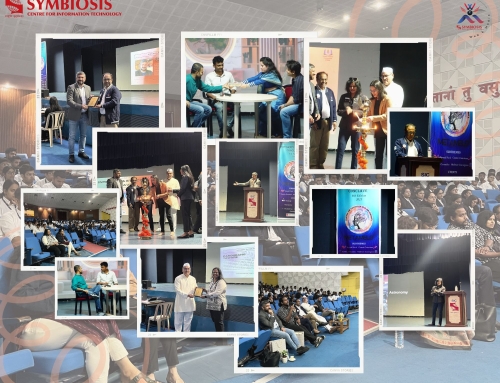Impact of Free Trade Agreements on India

Impact of Free Trade Agreements on India
Introduction
In today’s world when world economy is liberalizing every country is involved in some kind of free trading agreements. Free trading agreement are the agreement in which countries agree to remove trade barriers like tariffs and quotas on most of the goods and services which are traded amongst them. These FTA seems to be beneficial for the countries because it liberalizes the trade and increase the openness of economy. The free trade agreements in which currently India is involved are SAFTA(South Asian Association for Regional Cooperation), BIMSTEC(Bay of Bengal Initiative for Multi-Sectoral Technical and Economic Cooperation) and ASEAN – India CEC. There are few negotiations which are currently going on like India –China FTA, India – EU FTA.
I will highlight some Free Trade Agreements that have already been signed and in few which are in progress.
India-ASEAN FTA
The India ASEAN Free Trade Agreement (FTA) was signed in Bangkok on August 13, 2009, and came into effect from January 1, 2010 with Malaysia,Thailand and Singapore. It is expected to be in place with all member countries by 2016. The FTA collectively covers a market of nearly 1.8 billion people and proposes to gradually slash tariffs for over 4,000 product lines. Currently the FTA is restricted to trade in goods while negotiations for a similar agreement for services are currently under way.
What is therefore the likely impact of the India-ASEAN FTA on the Indian economy? What industries had benefitted from the implementation of the FTA and what industries were hurted? Was this likely to create a significant impact on the wages, employment and trading patterns in India in the passed years? What opportunities and threats should Indian businesses be aware of?
All this can be answered at the end of the article.
Drawing upon the mixed findings of the impact of other FTAs on the member countries, it is therefore not surprising that the impact of the India-ASEAN FTA on the Indian economy had also benefitted some constituents while it had negatively impacted certain sectors in the short run,but fruitfull results will be given to the economy in the long run.
Drawing upon existing scenario we find strong reason to advocate that the success of the FTA is critically dependent on the existence of good institutions in the country and an efficient regulatory environment such that they act as true enablers for the benefits to flow through and disperse throughout the economy.Long run Benefits from the FTA can possibly have a positive impact on India‟s growth rate, help improve productivity in Indian manufacturing and usher in an environment (driven by healthy competition) that can promote greater business ties leading to employment creation and greater trade within India and ASEAN.
Role in Services Sector
Currently negotiations between the ASEAN nations and India has been facing some serious road blocks over the issue of including services as a part of the FTA along with the free trade in goods. Concerns have emerged over the issue of movement of natural persons, or Mode IV, as referred in trade terminology.India has been demanding more liberalization in the Mode IV category so as to
enable more Indian professionals like doctors, nurses, chefs and accountants to find greater job opportunities in countries like Brunei, Cambodia, Indonesia,Laos, Malaysia, Myanmar, the Philippines, Singapore, Thailand and Vietnam.
Countries like Indonesia and Philippines have raised objection to such further
liberalization, owing to their specific economic scenarios like unemployment or
unskilled workers.
Impact
The following Indian industries enjoy a greater competitive advantage relative to their counterparts in the ASEAN countries Chemicals Medical and pharmaceutical ,Textiles, apparels and accessories, Handicrafts & carpets,On the other hand, the following industries in ASEAN enjoy a larger competitive advantage than the counterparts in India:Machinery and appliances,Electrical equipment. It is established that ASEAN countries will gain significantly increased market access in
India in several semi-processed or processed agricultural products. Both the reduced demand
for local agricultural products because of this and the increased imports of close substitutes
could lead to a fall in the prices of local crops and thus adversely affecting the domestic
agricultural sector.
Import liberalisation in intermediate goods will impel multinational corporations
(MNCs) to undertake production rationalisation across the region, particularly in the transport
equipment and machinery sectors. This might also help the Indian MNCs active in the region,
especially in the chemicals and the iron and steel sectors.This will lead to India’s deeper integration in the production networks for some industries such as machinery, chemicals and transport equipment
On the other hand, there are hardly any immediate benefits for Indian producers as average percentage tariff drops in Malaysia,Indonesia and Thailand’s Normal Track products are much lower than India’s. Further, the ASEAN-5 economies are leading exporters of light manufacturing products. India will also be competing with China and South Korea in the ASEAN market, which have already signed FTAs with ASEAN. Thus Indian SMEs will find it difficult to compete with these countries in such sectors.
Indian EU FTA
In 1962, the Republic of India was one of the first countries to begin diplomatic relations with the European Union. During the sixth summit held in September 2005, the EU and India agreed on a Joint Action Plan and to take positive steps to increase bilateral trade and economic cooperation further and to tackle barriers to trade and investment. A High Level Trade Group (HLTG) was set up to study and explore ways to make the relationship more intense than it already was by also improving on environmental and social issues. The HLTG reported to the EU-India Summit in October 2006, recommending that an expanded trade partnership be developed through the negotiation of a broad-based trade and investment agreement.
Impact
The free trade agreement which India is negotiating with the European Union threatens to jettison some of the health safeguards in India’s patent legislation which make possible the production of cheap generic medicines Several of the health safeguards included by the Indian Parliament in the Indian patent law are now at risk of being overturned or undermined by the TRIPS-plus demands of the European Commission – the executive arm which negotiates on behalf of the EU – in the EU-India FTA negotiations. There are three distinct areas of concern in the ongoing negotiations that could adversely impact India’s generic production capacity and, consequently, the ability of patients in India and across the developing world to access safe, effective and affordable generic medicines from India. These are the intellectual property chapter, the investment chapter and the regulatory standards chapter. While the EU, the US and even Japan appear to have a co-ordinated strategy promoting TRIPS-plus measures in the name of trade that will adversely impact generic competition, developing countries appear unable or unwilling to create a common platform for resisting these efforts.
Indo China FTA
India and China have come to play an increasingly dominant role in world economic affairs. Both nations have posted aggressive growth rates and, amongst other things. China in particular, has gained a large footprint in international trade and investment flows. Today, it is the world’s largest exporting nation while India’s exports have grown four fold over the period of 2001-2009.
In the recent past both China and India have been pursuing FTAs with a variety of countries particularly in Asia. However, no progress has been made towards the signing of a FTA between India and China – two of the largest and fastest growing economies of Asia. In fact, India’s domestic industry has sounded notes of caution on several occasions over a possible FTA with China. In the context it is important to analyse, and if possible quantify, the potential affects of a FTA with China on India and to identify the specific areas wherein, a reduction of trade barriers could result in mutual benefit.
India-China trade has a marked imbalance with India importing three times as much as it exports to China. Growth in bilateral trade has been rapid. China’s exports to India have been growing at a greater rate than overall Chinese exports as well as overall Indian imports. In other words, China is making inroads in to the Indian market at a much quicker pace than in any of its other export destinations. It is also faster than the average exporter to India in grabbing market share in India.
Impact
An FTA between India and China could pose some foreseen hurdles. These are due to
the diverse economic regimes of the two countries. . In some cases where higher trade is leading to higher economic growth, the lower income groups are being ignored. An India-China FTA could have a negligible impact on poverty reduction. Let us not brush aside the fact that China is also a growing market for goods Indian manufacturers will be exposed to the opportunity to export goods to this huge Chinese market.
Suggestions
Any bilateral agreement between the two countries needs to be comprehensive and overarching, encompassing not just goods but also services, investment, collaboration in research and development and must be backed by frameworks on issues such as antidumping, standards, and dispute resolution. Only then can India stand to gain from a bilateral accord with other coutires. Hence there should be a exhaustive study to assess how India and other nations can engage each other in these other areas, specifically in services trade, cross border investments, and research and development efforts, before India pursues a FTA with them. Finally, one must not ignore the role of trade and commerce in moderating bilateral relationships. A FTA may have benefits that escape quantification and transcend economics.
Conclusion
Concern over the domestic economy should not result in barriers on free trade, the country would benefit from opening itself up further to international competition,also the government can ensure that the interests of farmers and labour-intensive industries would be protected.
The axis of power is changing. It is slowly moving from the west to the east. The World of which india is a very important part,in the future, will become one of the major trading blocs in the world. Therefore, integration in this axis is very important from India’s point of view. The option of imposing safeguard duties, rules of origin and the lack of an early harvest scheme were some protective measures that can be applied. It seems evident that FTAs are fast bypassing the entire WTO framework of trade liberalisation and cover both more extensive (covering more areas) and intensive (going deeper into existing areas) liberalisation. The FTAs that India is negotiating and signing are getting more ambitious and leaving goods trade far behind.
By
Aditya Chordia
MBA – ITBM
2012-2014
SCIT















